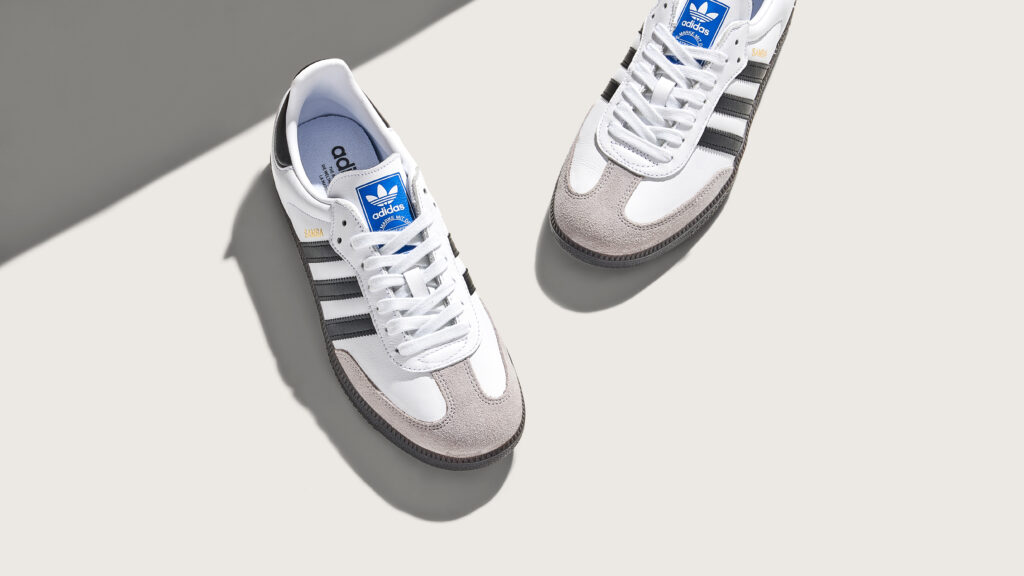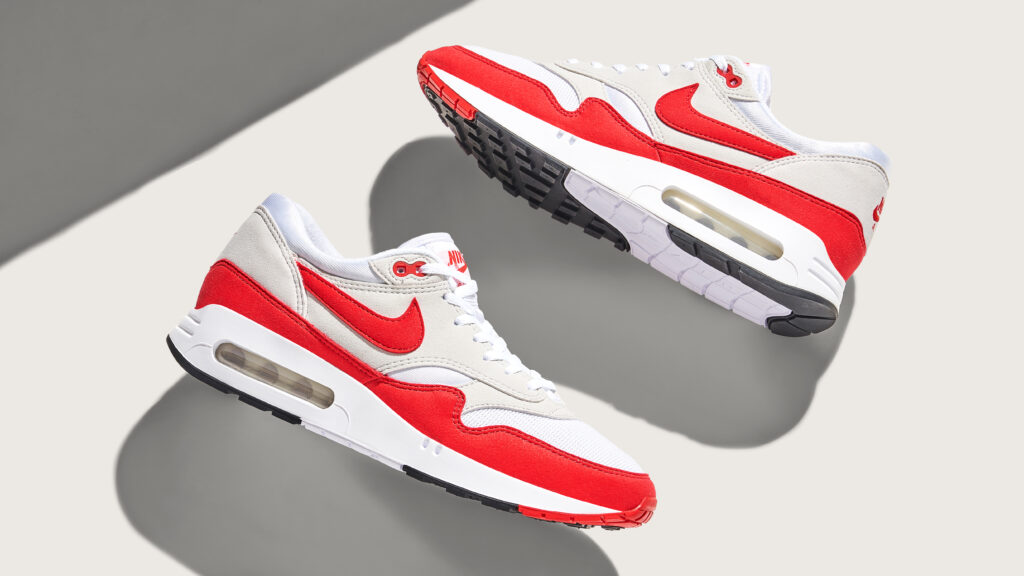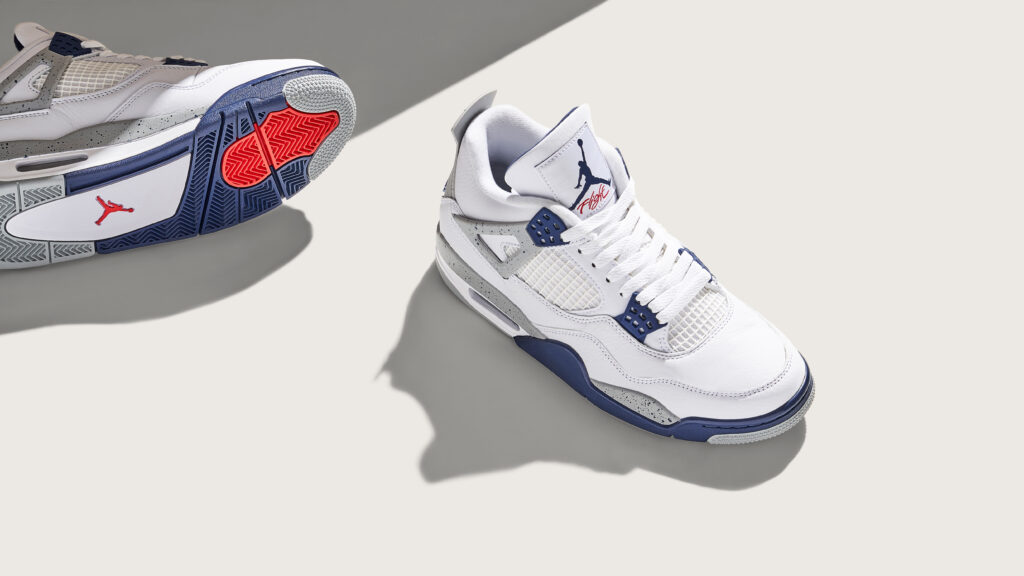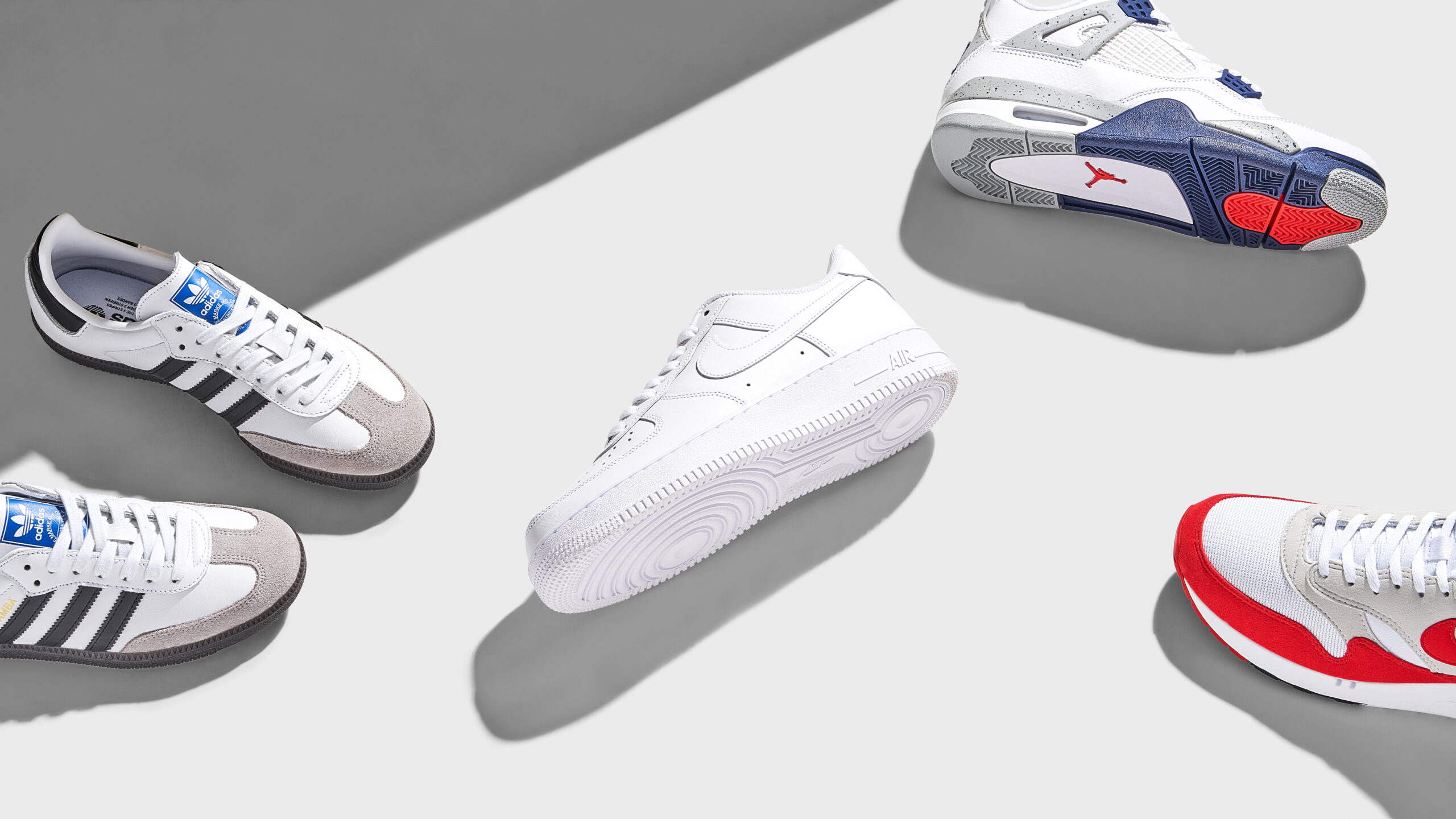A back at the history of your favourite shoes.
For a long time, sneakers were the shoes reserved for sporting activities, with few occasions deemed appropriate to wear casual footwear. However, there has been a shift in recent years, as wearers have swapped out their uncomfortable shoes for reliable, comfort-focused trainers. In the late 20th century, casual footwear became a mainstay in wardrobes worldwide thanks to the jogging and aerobics boom of the 1970s and 1980s, giving sneakers and T-shirts a chance to shine. With a focus on performance, good-quality design, and some help from high-profile athletes and unofficial subcultural endorsements, sneakers have become the go-to footwear choice for many.
If you’d like to know a bit more about where your favourite sneakers come from, but don’t fancy trawling through the history books, read our guide below.
adidas Samba
Initially released in 1949 ahead of the 1950 Brazil World Cup, the adidas Samba has its roots in the beautiful game. Made with the icy winter football pitches in mind, a gum rubber sole was incorporated to provide traction — a distinctive design feature that can still be found on the Samba today. Its low-top leather construction makes for an efficient football-forward design. In many iterations of the Samba, nods to the shoe’s original purpose can be found, such as its extended tongue, providing cover to the laces. This is something that London label Wales Bonner has incorporated into its retro, nostalgia-driven adidas collaboration.

Nike Air Max 1
Serving as Tinker Hatfield’s sneaker design debut, the Nike Air Max 1 changed the direction of Nike forever. When the Air Max 1 first reached consumers in 1988, it was the first sneaker to have Nike’s pioneering Air cushioning on full display. A former athlete himself, Hatfield channelled the tenacity of a champion into his role. Nike wanted to incorporate a wider Air Bubble into the running shoes, which initially proved difficult for the design team. Hatfield proposed a design that would incorporate a wider Air bag by removing part of the midsole, revealing the Nike Air Bubble. By lifting the veil on Nike’s technology, the blueprint was set for the Swoosh brand’s sports and lifestyle silhouettes that are still used to this day. This technology set Nike apart from competitors such as Asics, Reebok, New Balance and adidas.

Nike Air Jordan 4
The Nike Air Jordan 4 is the basketball sneaker overflowing with fashion appeal. Another Tinker Hatfield design, first made available in 1988, the Jordan 4 offers a supportive mid-top design that makes use of Nike’s Air technology. Worn by all star basketball player Michael Jordan during the height of his success, this basketball shoe combines durable leather with breathable mesh and support wings.
As is the case with a number of Hatfield’s designs, the Air Jordan 4 has made the move from athletics to aesthetics. The NBA-approved sneaker has proved extremely popular with sneakerheads and streetwear enthusiasts thanks to a number of limited-edition collaborations with hip-hop artist Travis Scott, and designer label Off-White.

Nike Air Force 1
Designed by Bruce Kilgore, and made available in 1982, the Nike Air Force 1 is one of the biggest contributors to sneaker culture as we know it, and one of the most famous white sneakers to ever release. Originally only available in a high-top before later being introduced as a low in 1983, the Air Force 1 was the first basketball sneaker to incorporate Nike’s Air technology providing cushioning below the insole. A durable leather construction paired with a perforated toe box ensures a comfortable wear, no matter the occasion. Most popular in its all-black and all-white colourways, the AF1 has transcended from the court and to become a minimalist all-outfit icon.

adidas Gazelle
Another sports-focused sneaker from the European sportswear brand: the adidas Gazelle. First released in 1968, the now infamous style disrupted the sneaker market at the time. Thanks to a suede construction the Gazelle was able to be dyed more easily than the leather options available, whilst also providing the durability found in leather silhouettes. Much like its cousin — the adidas Samba — the Gazelle has effortlessly weaved from sports to stylish wardrobes. Featuring as part of a coveted Gucci and adidas collaboration, the supple suede sneaker released alongside sportswear staples including tracksuits, duffle bags and sports socks, nodding to the style’s athletic roots.
